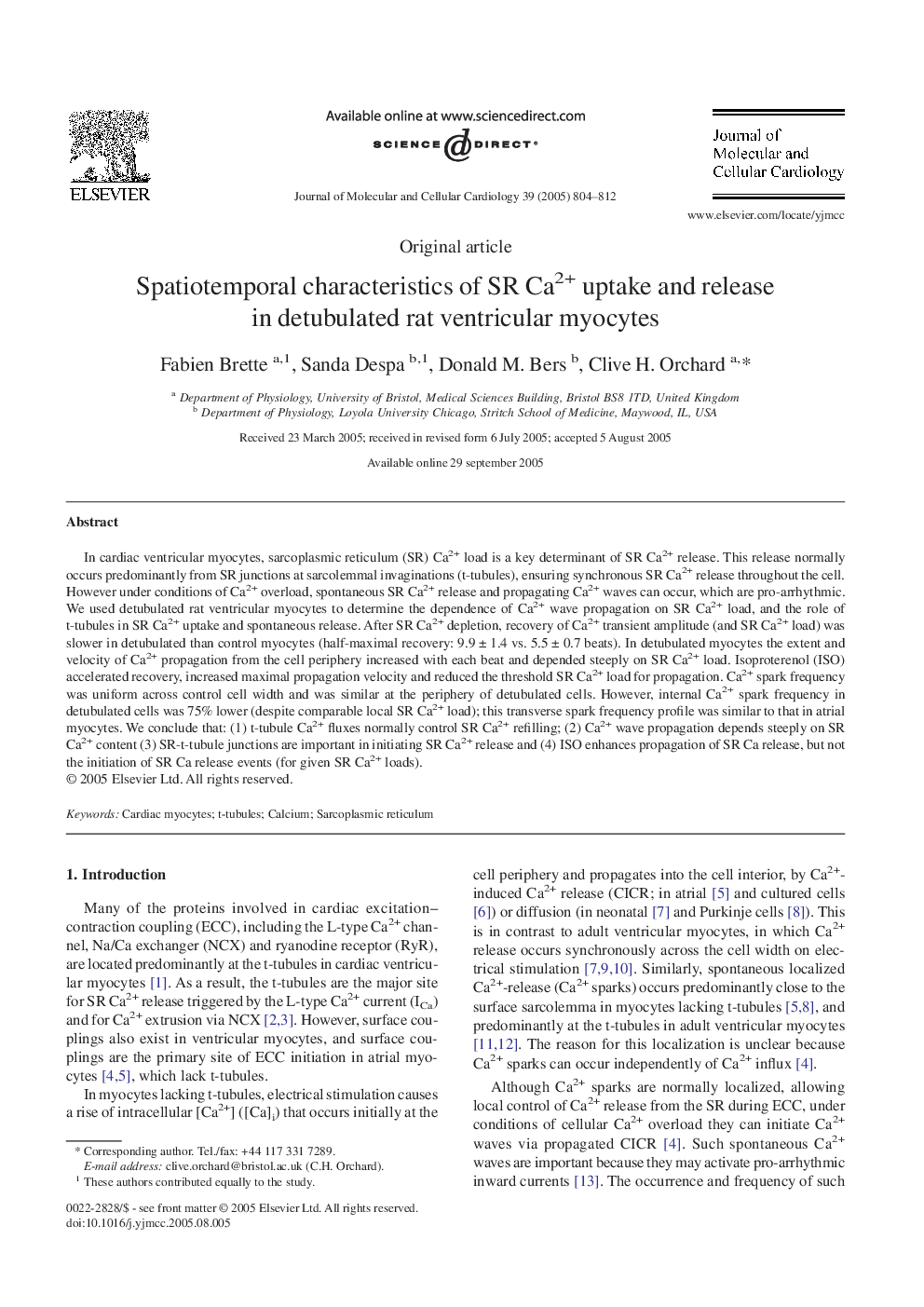| Article ID | Journal | Published Year | Pages | File Type |
|---|---|---|---|---|
| 10954397 | Journal of Molecular and Cellular Cardiology | 2005 | 9 Pages |
Abstract
In cardiac ventricular myocytes, sarcoplasmic reticulum (SR) Ca2+ load is a key determinant of SR Ca2+ release. This release normally occurs predominantly from SR junctions at sarcolemmal invaginations (t-tubules), ensuring synchronous SR Ca2+ release throughout the cell. However under conditions of Ca2+ overload, spontaneous SR Ca2+ release and propagating Ca2+ waves can occur, which are pro-arrhythmic. We used detubulated rat ventricular myocytes to determine the dependence of Ca2+ wave propagation on SR Ca2+ load, and the role of t-tubules in SR Ca2+ uptake and spontaneous release. After SR Ca2+ depletion, recovery of Ca2+ transient amplitude (and SR Ca2+ load) was slower in detubulated than control myocytes (half-maximal recovery: 9.9 ± 1.4 vs. 5.5 ± 0.7 beats). In detubulated myocytes the extent and velocity of Ca2+ propagation from the cell periphery increased with each beat and depended steeply on SR Ca2+ load. Isoproterenol (ISO) accelerated recovery, increased maximal propagation velocity and reduced the threshold SR Ca2+ load for propagation. Ca2+ spark frequency was uniform across control cell width and was similar at the periphery of detubulated cells. However, internal Ca2+ spark frequency in detubulated cells was 75% lower (despite comparable local SR Ca2+ load); this transverse spark frequency profile was similar to that in atrial myocytes. We conclude that: (1) t-tubule Ca2+ fluxes normally control SR Ca2+ refilling; (2) Ca2+ wave propagation depends steeply on SR Ca2+ content (3) SR-t-tubule junctions are important in initiating SR Ca2+ release and (4) ISO enhances propagation of SR Ca release, but not the initiation of SR Ca release events (for given SR Ca2+ loads).
Related Topics
Life Sciences
Biochemistry, Genetics and Molecular Biology
Cell Biology
Authors
Fabien Brette, Sanda Despa, Donald M. Bers, Clive H. Orchard,
